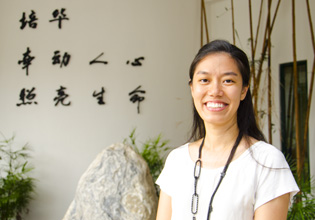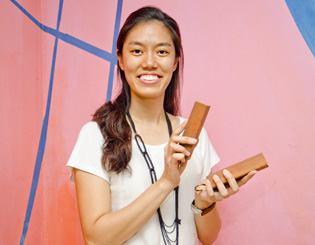Why Singapore’s English Teachers Should Embrace Singlish, Not Fight It
Is it time for Singaporean educators to embrace Singlish as a legitimate learning tool? What the Research […]
Read More
A ramp, some toy cars and a sheet of paper – that’s all a group of Primary 5 pupils were given for a Science experiment. They were then left on their own to find out how height affects distance. For some, this might be cause for panic. But for this group of learners, it was a challenge they welcomed.
Some of Mrs Noelle Chow’s pupils at Xishan Primary School (where she used to teach) were accustomed to getting a blank sheet of paper during Science lessons. They weren’t given any steps to follow or structured questions to answer – and they loved it.
Of course, this approach doesn’t work for all pupils. Some groups receive step-by-step instructions, and other groups get fill-in-the-blanks worksheets. And all of these groups could be in the same class doing the same experiment at the same time.
Different children have different levels of skills. Now at Pei Hwa Presbyterian Primary School, Noelle purposefully adapts her teaching to her pupils’ different learning abilities, even within a single class.

In designing Science experiments, she often differentiates the different process skills that her pupils need to learn. For those who are weaker in the subject, she focuses on basic skills like content recall.
Higher ability pupils, on the other hand, are encouraged to evaluate or even create their own experiments. What variables do they need to measure? Which variable needs to change? These are things they have to figure out on their own.
“For the high-ability students, they appreciate the freedom of exploring,” explains Noelle, who has been teaching Science for over 7 years. “They don’t need to sit through their teacher’s lecture, going through point by point, and they have more time to play.”
Also, depending on the group’s ability, Noelle gives certain information to one group but not the other. For example, to encourage the more able pupils to think critically and ask questions, she deliberately withholds some information from them during experiments.
This approach is very much in line with the spirit of inquiry promoted in Science. “Inquiry depends on how much information you withhold from the students,” Noelle explains. “The more you withhold, the more they have to think on their own.”
The way in which pupils are grouped also makes a big difference when it comes to differentiated instruction. Noelle says she made the mistake of putting pupils of different abilities in the same group. She soon found that it was frustrating for all.
– Mrs Noelle Chow, Pei Hwa Presbyterian Primary School
“If you put them in mixed-ability groups, they will drive each other crazy,” she notes. “You can really feel the tension. In the end, some pupils in the group will be passive.”
Allowing pupils to work with peers of the same ability encourages every member of the group to be an active participant. As they work and learn at the same pace, it minimizes the chance of anyone being left behind.
Noelle often starts off by grouping pupils based on their assessment results. Along the way, she makes changes to the groups, shifting pupils to a different one if they show signs of a poor fit.
“It’s through one or two experiments that I get to see if these students translate what I see on paper into their learning,” Noelle explains. “I would change the grouping if I find they are more suitable in another group.”
Differentiation and facilitation must go together, says Noelle, especially for the weaker pupils. “Facilitation is very important when it comes to differentiation. If not, they will be totally lost.”
– Noelle on guiding a class of mixed-ability learners
Unlike their higher ability peers, these pupils receive experiment worksheets with additional information, rather than an open-ended task. For pupils who still struggle with the experiment, help is not far away.
With the assistance of an Allied Educator (AED), Noelle guides these pupils through the experiments, ensuring that they are on the right track. She constantly prompts them with questions that point them in the right direction.
She adds that it is also important for pupils to see progress in their learning. “The groups are like that now but it’s not going to be like that forever. So they do know that groups may change. There is something they can hope for.”
And though it may take a while, her efforts pay off when pupils from the low ability group “graduate” to the mid-ability worksheet, while those from the mid-ability group eventually join the ranks of the high-ability learners.
Knowing how and when to differentiate classroom instruction may take some getting used to, but Noelle encourages teachers to experiment with different ways of teaching.
 From her experience, differentiation often results in a “chaotic” classroom. “My Science classes are always very noisy, but you can see from their faces that they are having fun.
From her experience, differentiation often results in a “chaotic” classroom. “My Science classes are always very noisy, but you can see from their faces that they are having fun.
Despite the soaring noise level, Noelle feels that the fun her pupils experience from such an approach translates into their learning because things that are enjoyable tend to be more memorable.
All you need are some ground rules and clear expectations. “Be very firm about it,” advises Noelle. “If they work within the boundaries given, the noise should be acceptable.” To get their attention, she simply claps two wooden blocks together and order is restored in the classroom.
“You just have to try,” she adds, “and don’t be afraid that the class will be very chaotic.The first lesson is always very daunting. But as you conduct a few more differentiated lessons, it can be fun, even for the teacher.” Dare to differentiate, and the results might just surprise you.